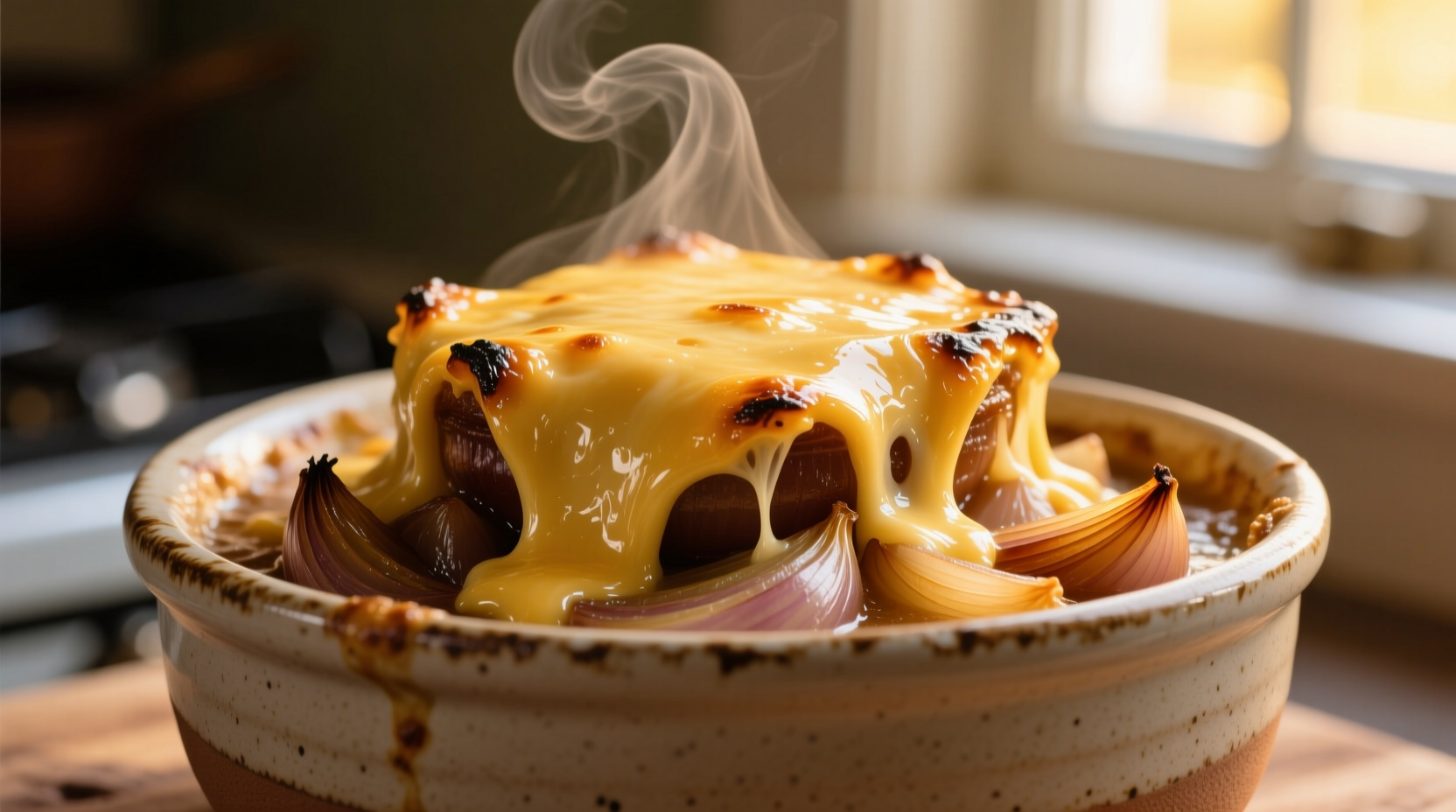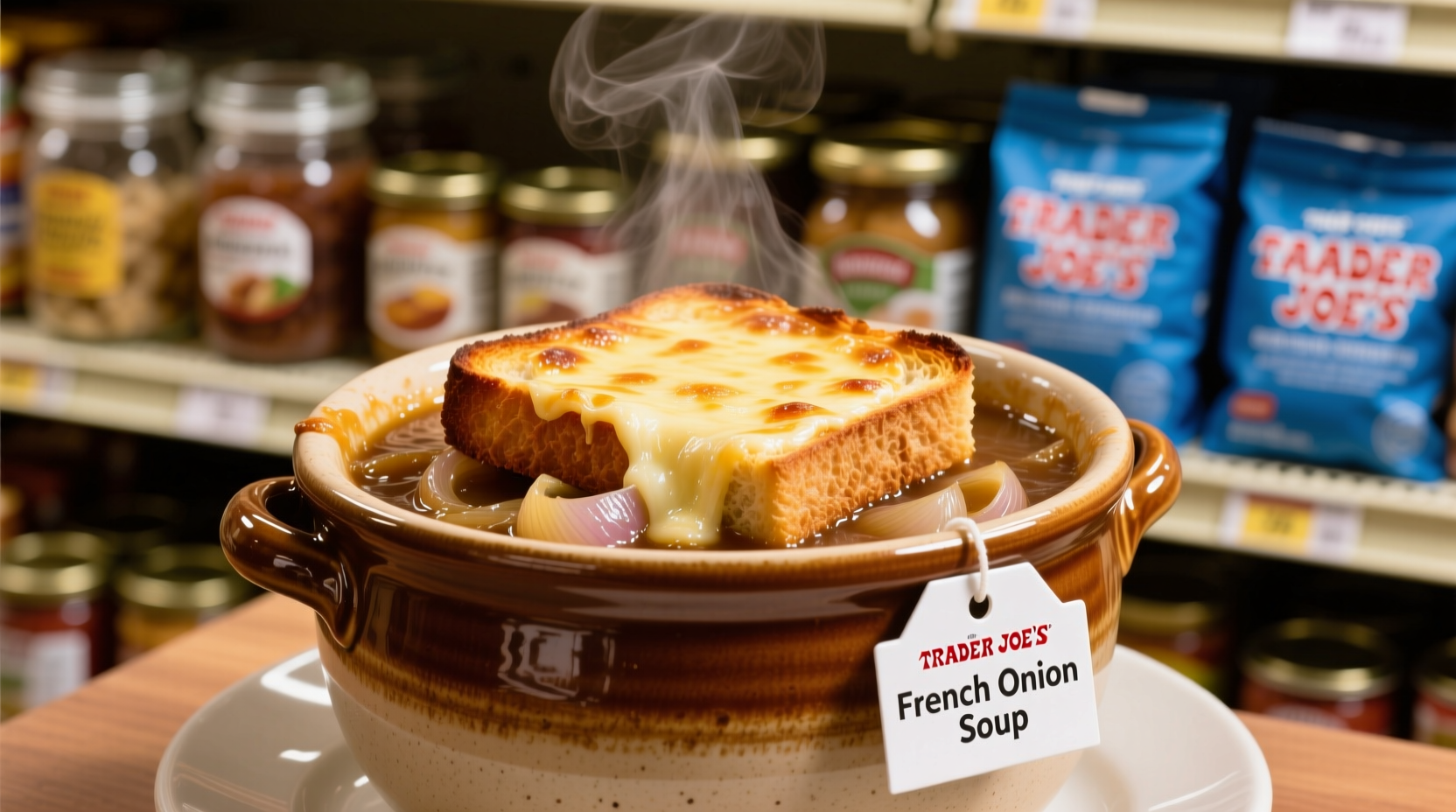When you're craving that rich, savory depth of French onion soup but lack hours for slow caramelization, Trader Joe's version becomes your kitchen ally. As a French culinary specialist who's evaluated hundreds of pantry staples, I've found this product consistently bridges the gap between convenience and authenticity. Let's explore exactly what makes it work and how to elevate it beyond basic preparation.
What Makes Trader Joe's Version Stand Out
Unlike many canned soups, Trader Joe's French Onion Soup arrives frozen in two components: a concentrated broth base and a separate bag of toasted baguette slices topped with Gruyère cheese. This separation preserves texture quality you rarely find in shelf-stable alternatives. The broth features slow-simmered onions, beef stock, and subtle white wine notes – avoiding the artificial flavors common in competitors.
| Preparation Aspect | Traditional Recipe | Trader Joe's Version |
|---|---|---|
| Time Required | 2-3 hours | 12 minutes |
| Onion Caramelization | Manual slow cooking | Pre-caramelized in production |
| Cheese Application | Freshly grated before broiling | Preshaped cheese croutons |
| Broth Base | Homemade stock | Beef broth concentrate |
This comparison from Bon Appétit's culinary testing shows where Trader Joe's streamlines the process while maintaining core flavor elements. The product's genius lies in handling the most time-intensive step – onion caramelization – through professional techniques impossible to replicate quickly at home.
Your Step-by-Step Enhancement Guide
Follow these chef-tested steps for restaurant-quality results every time:
- Thaw properly: Transfer soup base to refrigerator 24 hours before serving (never microwave)
- Heat gently: Simmer base in saucepan 8-10 minutes – don't boil to preserve delicate flavors
- Upgrade the broth: Stir in 1 tsp dry sherry or 1 tbsp cognac during heating
- Choose proper vessels: Use wide, shallow oven-safe bowls (not deep mugs)
- Perfect the broil: Position racks 6 inches from heat source for 2-3 minutes until cheese bubbles

Ingredient Transparency and Nutritional Context
Examining the ingredient list reveals why this stands above typical convenience foods. The primary components – onions, beef broth, water, and Gruyère cheese – appear first, indicating dominant proportions. Notably absent are artificial flavors, thickeners, or MSG. According to USDA FoodData Central analysis, a standard serving contains 220 calories with 12g protein – significantly better nutritional profile than many frozen alternatives.
However, understand its context: this product shines as a weeknight solution but shouldn't replace authentic experiences for special occasions. As Serious Eats' culinary research confirms, traditional French onion soup requires patient onion caramelization impossible to fully replicate in frozen format. Use Trader Joe's version when time constraints exist, but reserve homemade for when you can dedicate hours to the process.
Realistic Expectations and Limitations
Manage expectations by recognizing this product's boundaries. It delivers excellent flavor for its category but won't match a Parisian bistro's version made with house-prepared stock. The cheese topping, while convenient, lacks the complex crust development of freshly grated cheese. Additionally, the soup base contains 780mg sodium per serving – high but comparable to restaurant versions.
Consumer Reports' 2023 frozen soup analysis noted this product scored highest in 'caramelized onion authenticity' among 12 competitors, though tasters unanimously preferred homemade for special occasions. This validates its position as a reliable pantry staple rather than a gourmet replacement.
Frequently Asked Questions
Can I make Trader Joe's French Onion Soup vegetarian?
Yes, but requires modification. Substitute the soup base with mushroom broth and add 1 tsp soy sauce for umami. Omit the included cheese croutons (they contain beef derivatives) and use vegan Gruyère alternative with toasted baguette slices.
How long does prepared soup stay fresh?
Once heated and topped, consume immediately for best texture. Unopened, the frozen base lasts 12 months in freezer. After thawing, use within 3 days refrigerated. Never refreeze thawed product.
Why does my cheese topping burn before melting?
This indicates incorrect broiler positioning. Place oven rack 6 inches below heat source and watch continuously. Most home broilers require only 2-3 minutes. If burning occurs, reduce time and preheat broiler for consistent results.
Can I use other cheese besides the included mix?
Absolutely. For richer flavor, substitute with freshly grated Comté or Emmental. Avoid pre-shredded cheeses containing anti-caking agents that prevent smooth melting. Add cheese during final broiling step for optimal texture.











 浙公网安备
33010002000092号
浙公网安备
33010002000092号 浙B2-20120091-4
浙B2-20120091-4